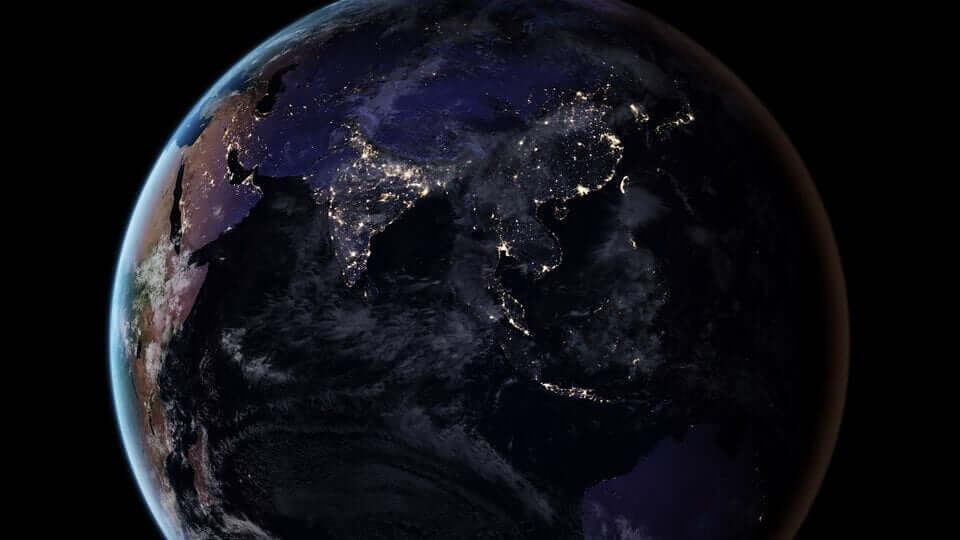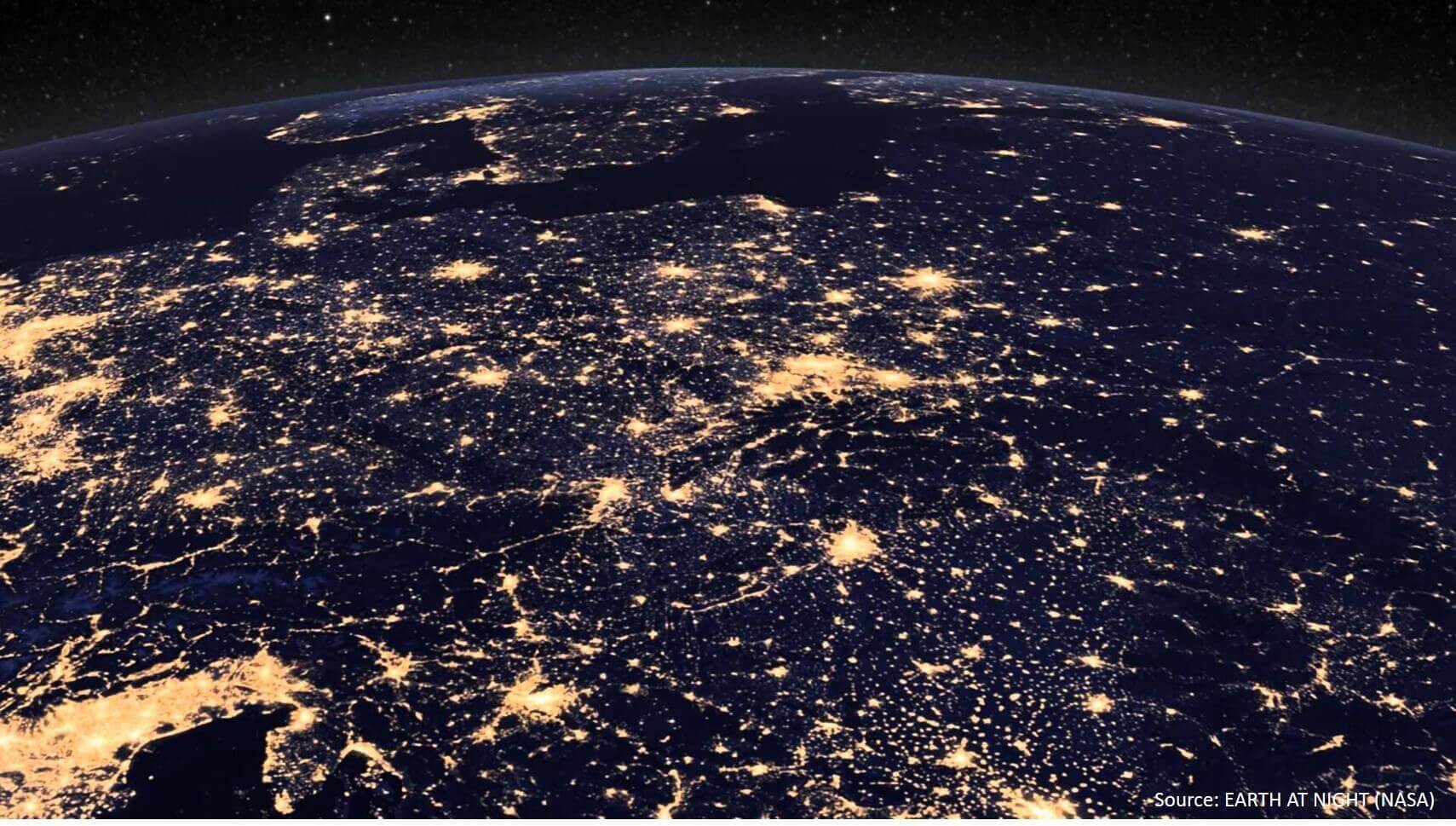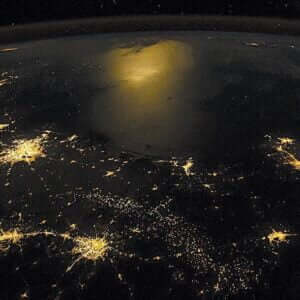Remote Sensing of Night is known as Night Light Remote Sensing (NLRS).
You must have seen the stars in the sky at night, but have you ever visualized our earth at night? When seen from space during the day, our earth looks very quiet and calm. In the daytime, our big blue marble is land, oceans, and clouds with no distinguished boundaries, no political borders, no cities, towns, bridges, etc. But the night is electrified with a glow of yellow-white. One can visualize the clusters and patterns of cities/towns, bridges, roads/highways very clearly at night. One can also see the boats in the open waters. All these artificial lights depict the story of how human settlements has evolved from time to time. All these incredible and staggering photographs and images of our space at night have attracted many people for decades.

Earth at night image released by NASA reveals the human settlements from space. It is very interesting how researchers are attracted to study our world just by making beautiful maps of earth and night-lights. Remote Sensing of the night is known as Night Light Remote Sensing. But before understanding this, let’s understand what is Remote Sensing?
Brief about Remote Sensing:
Remote Sensing is the science of identifying, observing, collecting, and measuring objects without coming into direct contact with them. Conventionally, remote sensing has been widely used in monitoring natural resources (monitoring deforestation, forest fires, etc.). In addition to the natural resources, it is also used to get information about man-made objects in urban areas. It utilizes a remote sensor for capturing an image. For example, UAVs, airplanes & satellites have unique and peculiar sensors for carrying these sensors for a special purpose. Remote sensing has a huge range of applications in various fields such as Coastal & Environmental Applications, Ocean Applications, Hazard & Risk Assessment, Natural Resource Management, etc.
Brief about NLRS:
Remote Sensing of Night is known as Night Light Remote Sensing (NLRS). Night-time lights (NTLs) are a category of observations from satellites and derived products based on anthropogenic illumination present on Earth’s surface. Night-time Light Remote Sensing means acquiring visible light at night of land/water in cloudless conditions. In contrast to the remote sensing of daytime, which is generally limited to information on physical characteristics of land cover, night-time light remote sensing provides a unique and direct perspective on human activities, specifically those activities associated with artificial light at night.
NLRS has demonstrated a distinctive source for gaining a perspective on human settlements and related activities. NLRS covers a broad range of fields and applications, making it an unparalleled advantageous part covering a large-scale of aspects. These aspects incorporate environmental aspects, socio-economic indicators, urbanization and monitoring human settlements, population density, development at a regional scale, fishing activities, and observing important events. It proves the effectiveness and role of NLRS to the planet.
The future of NLRS studies seems encouraging as numerous fine results are achieved and observed in the above-mentioned field of aspects. The main source of NTLs includes satellites: long-term satellite DMSP-OLS and new generation SNPP-VIIRS, Aerial Photography from ISS, EROS-B, JL1 constellation from China, and various aerial photography.
[aux_divider width=”medium” style=”dashed” margin_top=”20″ margin_bottom=”20″ extra_classes=””]
I hope this blog was intriguing enough and it might also have developed your interest in such a less explored domain of Remote Sensing. If this has engaged you, you will definitely enjoy reading the upcoming blogs, which will shed light on major Night-Time Light datasets and their applications in various domains. So stay tuned and don’t forget to check out the upcoming Quiz regarding the same topic this Saturday.
For more updates on our blogs, quizzes and activities, keep checking our website and do follow us on our social media pages.



Awsome we get so much knowledge from this and also know about the NLRS.. Earth looks like a starline😍